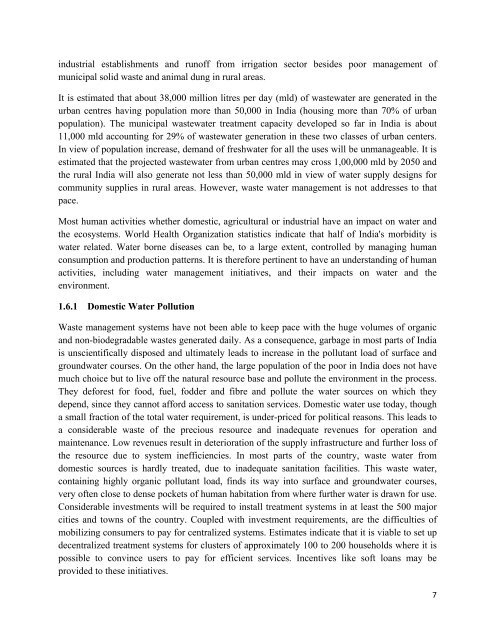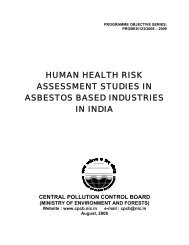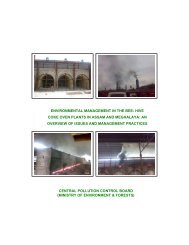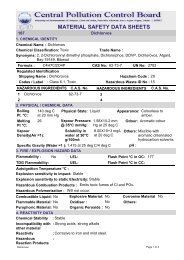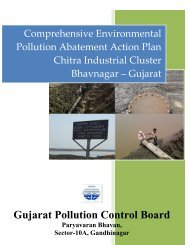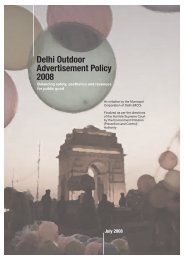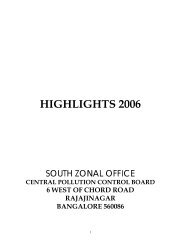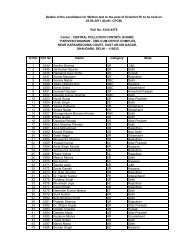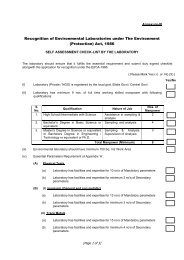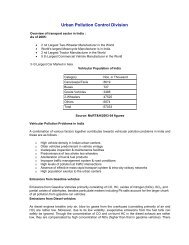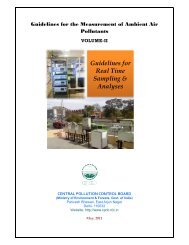Q ST QUA TAT ALIT US O TY IN OF W N IN WA NDIA ATER A- 2 R ...
Q ST QUA TAT ALIT US O TY IN OF W N IN WA NDIA ATER A- 2 R ...
Q ST QUA TAT ALIT US O TY IN OF W N IN WA NDIA ATER A- 2 R ...
Create successful ePaper yourself
Turn your PDF publications into a flip-book with our unique Google optimized e-Paper software.
industrial establishments and runoff from irrigation sector besides poor management ofmunicipal solid waste and animal dung in rural areas.It is estimated that about 38,000 million litres per day (mld) of wastewater are generated in theurban centres having population more than 50,000 in India (housing more than 70% of urbanpopulation). The municipal wastewater treatment capacity developed so far in India is about11,000 mld accounting for 29% of wastewater generation in these two classes of urban centers.In view of population increase, demand of freshwater for all the uses will be unmanageable. It isestimated that the projected wastewater from urban centres may cross 1,00,000 mld by 2050 andthe rural India will also generate not less than 50,000 mld in view of water supply designs forcommunity supplies in rural areas. However, waste water management is not addresses to thatpace.Most human activities whether domestic, agricultural or industrial have an impact on water andthe ecosystems. World Health Organization statistics indicate that half of India's morbidity iswater related. Water borne diseases can be, to a large extent, controlled by managing humanconsumption and production patterns. It is therefore pertinent to have an understanding of humanactivities, including water management initiatives, and their impacts on water and theenvironment.1.6.1 Domestic Water PollutionWaste management systems have not been able to keep pace with the huge volumes of organicand non-biodegradable wastes generated daily. As a consequence, garbage in most parts of Indiais unscientifically disposed and ultimately leads to increase in the pollutant load of surface andgroundwater courses. On the other hand, the large population of the poor in India does not havemuch choice but to live off the natural resource base and pollute the environment in the process.They deforest for food, fuel, fodder and fibre and pollute the water sources on which theydepend, since they cannot afford access to sanitation services. Domestic water use today, thougha small fraction of the total water requirement, is under-priced for political reasons. This leads toa considerable waste of the precious resource and inadequate revenues for operation andmaintenance. Low revenues result in deterioration of the supply infrastructure and further loss ofthe resource due to system inefficiencies. In most parts of the country, waste water fromdomestic sources is hardly treated, due to inadequate sanitation facilities. This waste water,containing highly organic pollutant load, finds its way into surface and groundwater courses,very often close to dense pockets of human habitation from where further water is drawn for use.Considerable investments will be required to install treatment systems in at least the 500 majorcities and towns of the country. Coupled with investment requirements, are the difficulties ofmobilizing consumers to pay for centralized systems. Estimates indicate that it is viable to set updecentralized treatment systems for clusters of approximately 100 to 200 households where it ispossible to convince users to pay for efficient services. Incentives like soft loans may beprovided to these initiatives.7


